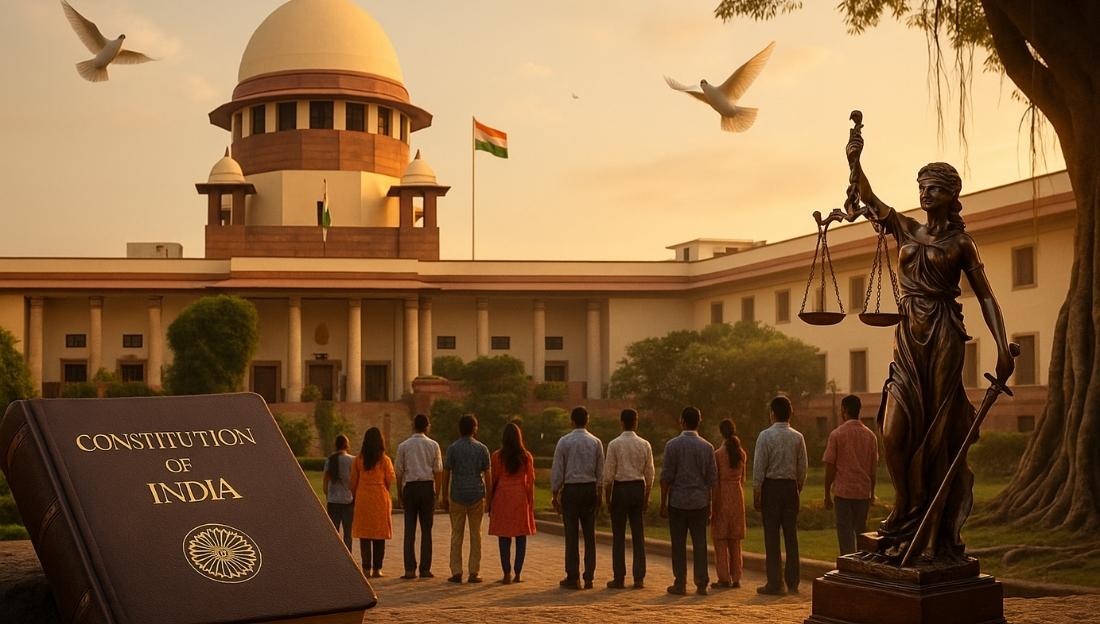The debate on whether reservations should go beyond the 50% ceiling has resurfaced. Recently, the Bihar opposition leader Tejashwi Yadav promised to raise quota to 85% if voted to power.
Constitutional Basis for Reservations
- Article 15: Guarantees equality in access to public spaces, education, etc., but allows special provisions for disadvantaged groups.
- Article 16: Ensures equality in public employment, while permitting reservations for OBCs, SCs, and STs.
- Current central quota share: OBCs – 27%, SCs – 15%, STs – 7.5%, EWS – 10% → Total: 59.5%.
- States have different percentages depending on local demographics.

MANDAL COMMISSION (1979):
- Purpose – Recommended 27% reservation for Other Backward Classes (OBCs) in central government jobs and educational institutions to promote social justice.
- Criteria – Identified OBCs based on social, educational, and economic backwardness, aiming to uplift underprivileged communities.
Judicial Stand on the 50% Ceiling
- Balaji vs State of Mysore (1962): Quotas must stay within reasonable limits, ideally under 50%.
- Indra Sawhney Case (1992): Upheld 27% OBC quota, fixed 50% cap (with rare exceptions), and introduced creamy layer exclusion.
- N.M. Thomas Case (1975): Stressed substantive equality, viewing reservations as part of equality, not an exception.
- EWS Verdict (2022): Allowed 10% quota for poorer sections among unreserved groups, treating the 50% cap as applying only to backward class quotas.
Key Issues in the Debate
- Formal vs Substantive Equality:
- Formal: Treats all groups equally, limiting reservations.
- Substantive: Seeks to correct historical disadvantages, supporting expanded quotas.
- Unequal Distribution of Benefits:
- Rohini Commission found 25% of OBC castes corner 97% of benefits; nearly 1,000 OBC groups got none.
- Similar concentration seen in SCs and STs.
- No creamy layer exclusion exists for SC/STs.
- Unfilled Vacancies:
- Around 40-50% of reserved posts remain vacant at the central level.
- Critics say extending creamy layer to SC/STs may worsen backlog.
Way Forward
- A caste census (2027) can give accurate data on backward class population for informed policymaking.
- Implement OBC sub-categorisation as recommended by the Rohini Commission.
- Explore a two-tier system for SC/ST quotas, giving priority to the most deprived.
- Balance reservation with skill development, education, and private sector opportunities since public sector jobs alone cannot meet aspirations.
INDIRA SAWHNEY CASE (1992)
- OBC Reservation Upheld – The Supreme Court allowed 27% reservation for OBCs in central jobs and services.
- 50% Limit & Creamy Layer – Reservations cannot exceed 50%, and the creamy layer (well-off OBCs) is excluded.
- No Promotions Reserved – Reservation applies only to initial appointments, not higher posts or promotions.
- Judicial Review – Courts can review reservation policies to ensure they follow the Constitution and don’t violate equality.
Conclusion:
The 50% cap is under increasing pressure from demands for greater social justice. A balanced approach — data-driven expansion, sub-categorisation, and focus on real empowerment — is crucial to ensure that reservation benefits reach the most disadvantaged without undermining equality of opportunity.





